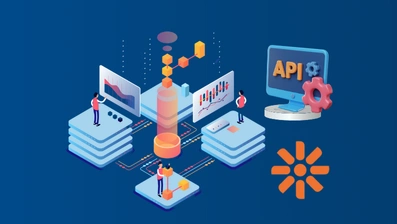In the dynamic world of e-commerce, businesses are constantly seeking ways to enhance their online presence and drive sales.
One powerful tool that has gained significant attention is kentico e-commerce development.
Kentico, a robust digital experience platform (DXP) for e-commerce, offers a comprehensive suite of features and capabilities to help businesses build, manage, and grow their online stores.
When it comes to building e-commerce store with kentico, the platform provides a seamless and intuitive experience for developers and marketers alike.
In this blog post, we will dive deep into the world of kentico for e-commerce, exploring its key features, benefits, and the process of developing a successful online store using this platform.
Therefore, let’s get right into it:
Why Choose Kentico For eCommerce Development?
When it comes to eCommerce development, choosing the right platform is crucial.
Kentico stands out as a top choice for businesses seeking a comprehensive and scalable solution.
Here are some compelling reasons why you should consider kentico e-commerce development:
All-in-One Platform: Kentico offers a complete digital experience platform (DXP) for e-commerce, combining content management, marketing automation, and e-commerce functionality in a single, integrated solution. This eliminates the need for multiple systems and streamlines your online operations.
Flexibility and Customization: With Kentico, you have the freedom to tailor your e-commerce store to your unique business requirements. The platform provides a wide range of Kentico Benefits, including extensive customization options, allowing you to create a distinct brand experience and differentiate yourself from competitors.
Robust E-commerce Features: Kentico boasts an impressive array of kentico e-commerce features, such as Kentico Pricing, product management, shopping cart functionality, order processing, and more. These features enable you to build a feature-rich online store that caters to your customers' needs and expectations.
Seamless Integration: Kentico seamlessly integrates with various third-party systems, including payment gateways, shipping providers, and customer relationship management (CRM) tools. This integration ensures a smooth and efficient e-commerce operation, enhancing the overall customer experience.
- Marketing Automation: Kentico's built-in marketing automation tools enable you to create targeted campaigns, personalize customer interactions, and nurture leads throughout the buyer's journey. By leveraging Kentico Marketing capabilities, you can drive higher conversion rates and boost customer loyalty.
Choosing Kentico for your e-commerce development opens up a world of possibilities.
Its comprehensive features, flexibility, and scalability make it an ideal platform for businesses looking to establish a strong online presence and drive growth in the competitive e-commerce landscape.
Key Features of Kentico for E-commerce
Kentico offers a wide range of powerful features that make it a top choice for building e-commerce store with kentico. L
et's explore some of the key features that set Kentico apart as a digital experience platform (DXP) for e-commerce:
Product Management
Kentico provides a user-friendly interface for managing your product catalog.
With kentico product management, you can easily add, edit, and organize products, set pricing, manage inventory, and define product variants.
The platform also supports multi-language and multi-currency functionality, enabling you to cater to a global audience.
Shopping Cart and Checkout
Kentico provides a user-friendly interface for managing your product catalog.
With kentico product management, you can easily add, edit, and organize products, set pricing, manage inventory, and define product variants.
The platform also supports multi-language and multi-currency functionality, enabling you to cater to a global audience.
Personalization and Content Management
Kentico's DXP vs CMS capabilities allow you to create personalized experiences for your customers.
With the Importance of digital experience, you can deliver targeted content, product recommendations, and promotions based on customer behavior and preferences.
The intuitive content management system (CMS) enables you to create and manage engaging product descriptions, blog posts, and other marketing content.
Marketing Automation
Kentico marketing automation tools help you streamline your marketing efforts and engage with customers at the right time.
You can create automated email campaigns, set up lead scoring, and trigger personalized actions based on customer interactions.
These features enable you to nurture leads, drive conversions, and build long-lasting customer relationships.
Search and Navigation
Kentico provides powerful search and navigation features to help customers find products quickly and easily.
With faceted search, product filtering, and sorting options, customers can narrow down their search results and find exactly what they're looking for.
The platform also supports SEO-friendly URLs and metadata management to improve your store's visibility in search engine rankings.
Analytics and Reporting
Kentico offers built-in analytics and reporting tools to help you gain insights into your e-commerce performance.
You can track key metrics such as sales, conversions, customer behavior, and more.
These insights enable you to make data-driven decisions and optimize your e-commerce strategies for better results.
By leveraging these key features of Kentico for e-commerce, you can create a feature-rich and engaging online store that delivers a seamless shopping experience to your customers. Whether you're focusing on CMS development or building a comprehensive digital experience, Kentico provides the tools and capabilities you need to succeed in the competitive e-commerce landscape.
Building Your E-commerce Dream with Kentico: The Development Process
Embarking on the journey of kentico e-commerce development requires careful planning and execution.
Let's dive deeper into the development process for building your dream e-commerce store with Kentico:
Step 1: Discovery and Planning
- Conduct stakeholder interviews to gather requirements and understand business objectives.
- Define your target audience and create buyer personas to guide the development process.
- Analyze your product catalog and define the necessary product attributes, variations, and categories.
- Outline the desired features and functionalities of your e-commerce store, such as kentico shopping cart, kentico product management, and integration with third-party systems.
- Create a detailed project plan, including timelines, milestones, and resource allocation.
Step 2: Design and User Experience
- Develop wireframes and mockups of your e-commerce store's key pages, such as homepage, product listing, product details, and checkout.
- Create a visually appealing and responsive design that aligns with your brand guidelines and enhances the user experience.
- Define the navigation structure and ensure intuitive browsing and product discovery.
- Optimize the design for mobile devices to cater to the growing mobile commerce audience.
Step 3: Kentico E-commerce Customization
- Identify the specific customization requirements based on your business needs.
- Extend the default Kentico functionality by developing custom modules, widgets, or web parts.
- Integrate third-party systems, such as payment gateways, shipping providers, or inventory management systems.
- Customize the kentico shopping cart and checkout process to streamline the purchasing flow and reduce cart abandonment.
- Implement personalization features using Kentico's Benefits to deliver targeted content and product recommendations.
Step 4: Content Creation and Management
- Develop a content strategy and define the content types, such as product descriptions, blog posts, and landing pages.
- Create engaging and SEO-friendly product descriptions that highlight features, benefits, and unique selling points.
- Optimize product images and videos to showcase your products effectively.
- Utilize Kentico's content management system to organize and manage your content efficiently.
- Implement version control and workflow processes to ensure content accuracy and consistency.
Step 5: Kentico E-commerce Development Process
- Set up the development environment and configure Kentico's e-commerce features.
- Implement the necessary data models, such as products, orders, and customer profiles.
- Develop custom functionality and integrate with external systems using Kentico's API and web services.
- Implement kentico e-commerce security measures, such as SSL encryption, secure payment processing, and user authentication.
- Optimize the store's performance by implementing caching, minification, and content delivery networks (CDNs).
Step 6: Testing and Quality Assurance
- Conduct thorough functional testing to ensure that all features and functionalities work as expected.
- Perform usability testing to validate the user experience and identify any areas for improvement.
- Test the store's performance under different load scenarios to ensure kentico e-commerce scalability.
- Conduct security testing to identify and mitigate any potential vulnerabilities.
- Perform cross-browser and cross-device testing to ensure compatibility and responsiveness.
Step 7: Launch and Deployment
- Prepare a detailed deployment plan, including pre-launch checklists and contingency plans.
- Set up the production environment and configure necessary server settings.
- Migrate the e-commerce store from the development environment to the production environment.
- Perform final testing and quality checks in the production environment.
- Configure domain settings, SSL certificates, and any necessary redirects.
- Launch the e-commerce store and monitor its performance closely.
Step 8: Post-Launch Maintenance and Support
- Provide ongoing technical support to address any issues or bugs reported by users.
- Monitor the store's performance, security, and uptime using logging and monitoring tools.
- Perform regular updates and security patches to keep the store up to date and secure.
- Analyze user behavior and gather feedback to identify areas for improvement and optimization.
- Continuously iterate and enhance the store based on user feedback, market trends, and business goals.
Throughout the development process, it's crucial to adhere to kentico e-commerce development best practices to ensure a robust and scalable implementation.
This includes following coding standards, implementing version control, conducting code reviews, and maintaining comprehensive documentation.
By following this detailed development process and leveraging Kentico's powerful features, you can create an e-commerce store that not only meets your business objectives but also delivers a seamless and engaging shopping experience to your customers.
With the right planning, execution, and ongoing optimization, your Kentico e-commerce store can become a thriving online business.
Case Studies & Examples
To better understand the power and effectiveness of Kentico for e-commerce development, let's explore some real-life success stories of businesses that have leveraged this platform to build their online stores.
Allergan
Allergan, a global pharmaceutical company, utilized Kentico as their digital experience platform (DXP) for e-commerce.
They required a scalable and flexible solution to manage their extensive product portfolio and deliver personalized experiences to their customers.
With Kentico's capabilities, Allergan was able to create a centralized product information management system, enabling efficient kentico product management across multiple markets and languages.
The platform's Kentico Marketing automation features allowed them to deliver targeted content and promotions, driving higher engagement and conversions.
Mazda
Mazda, the renowned automotive brand, chose Kentico to power their e-commerce initiative for selling car accessories and merchandise.
By building e-commerce store with kentico, Mazda was able to create a branded online store that seamlessly integrated with their existing website.
The Importance of digital experience or role of DXP was evident in Mazda's approach, as they focused on delivering a consistent and immersive brand experience across all touchpoints.
Kentico's flexible architecture and CMS development capabilities allowed Mazda to customize the store to their specific requirements and provide a user-friendly interface for their customers.
Konica Minolta
Konica Minolta, a leading provider of business and industrial imaging solutions, leveraged Kentico to build their e-commerce store for selling office equipment and supplies.
They required a platform that could integrate with their existing ERP system and provide a seamless order management process.
With Kentico's kentico for e-commerce features, Konica Minolta was able to create a user-friendly online store with advanced search functionality, product comparisons, and personalized recommendations.
The platform's Kentico Marketing automation capabilities allowed them to deliver targeted campaigns and nurture leads effectively.
These case studies demonstrate the versatility and effectiveness of Kentico for e-commerce development across various industries. By leveraging Kentico's robust features and customization options, these businesses were able to create online stores that met their unique requirements, delivered exceptional customer experiences, and drove significant business growth. These success stories serve as a testament to the power of Kentico as a digital experience platform (DXP) for e-commerce and its ability to help businesses thrive in the competitive online marketplace.
Considerations for Kentico E-commerce Development
When embarking on a kentico e-commerce development project, there are several important considerations to keep in mind to ensure a successful implementation.
Let's explore these considerations in detail:
Defining Business Requirements
Before diving into the development process, it's crucial to clearly define your business requirements.
This includes identifying your target audience, defining your product catalog structure, outlining the desired features and functionalities, and setting goals for your e-commerce store.
Having a clear understanding of your requirements will guide the development process and ensure that the final solution aligns with your business objectives.
Choosing the Right Kentico E-commerce Features
Kentico offers a wide range of e-commerce features, and it's essential to select the ones that best suit your business needs.
Consider features such as kentico shopping cart functionality, kentico product management, inventory management, order processing, and payment gateway integration.
Evaluate each feature based on its relevance to your business and its potential impact on the user experience.
Kentico E-commerce Customization
While Kentico provides a robust set of out-of-the-box features, you may require customization to meet your specific business requirements.
Assess the level of customization needed, whether it's extending existing functionality, developing custom modules, or integrating with third-party systems.
Consider the complexity of the customization and the resources required to implement and maintain it effectively.
Kentico E-commerce Security
Security is a critical aspect of any e-commerce store.
Ensure that your Kentico e-commerce development follows best practices for securing customer data, transactions, and sensitive information.
Implement measures such as SSL encryption, secure payment processing, and regular security updates.
Adhere to industry standards and regulations, such as PCI DSS, to maintain the trust and confidence of your customers.
Performance and Kentico E-commerce Scalability
As your e-commerce business grows, it's crucial to ensure that your Kentico store can handle increased traffic and transactions without compromising performance.
Consider factors such as server infrastructure, caching mechanisms, and database optimization to enhance the store's speed and responsiveness.
Implement scalability measures to accommodate future growth and peak traffic periods.
User Experience and Design
A seamless and intuitive user experience is vital for the success of your e-commerce store.
Invest in creating a visually appealing and user-friendly design that aligns with your brand identity.
Optimize the navigation, product presentation, and checkout process to reduce friction and encourage conversions.
Conduct usability testing to gather feedback and iterate on the design to continuously improve the user experience.
SEO and Digital Marketing
To drive traffic and visibility to your Kentico e-commerce store, consider implementing effective SEO and digital marketing strategies.
Optimize your product pages and content for search engines, leveraging relevant keywords and meta tags.
Utilize Kentico's Kentico Marketing automation features to create targeted campaigns, personalize user interactions, and nurture leads.
Integrate with social media platforms and leverage email marketing to engage with your audience and promote your products.
Integration with Third-Party Systems
Depending on your business requirements, you may need to integrate your Kentico e-commerce store with various third-party systems, such as ERP, CRM, or inventory management software.
Evaluate the compatibility and ease of integration between Kentico and these systems.
Consider the data synchronization processes, API integrations, and any custom development required to ensure seamless data flow and operational efficiency.
Ongoing Maintenance and Support
After launching your Kentico e-commerce store, it's essential to have a plan for ongoing maintenance and support.
Regular updates, security patches, and performance monitoring are crucial to keep your store running smoothly.
Consider partnering with a reliable Kentico development agency or having an in-house team to handle maintenance tasks, troubleshoot issues, and provide timely support to your customers.
By carefully considering these factors and aligning them with your business goals, you can make informed decisions throughout the kentico e-commerce development process. Proper planning, execution, and ongoing optimization will contribute to the success and growth of your online store.
DotStark, Powering eCommerce development With Kentico
DotStark is a leading kentico development company that specializes in delivering cutting-edge e-commerce solutions built on the Kentico platform.
With a team of certified Kentico experts, DotStark has a proven track record of helping businesses achieve their online goals through tailored e-commerce development services.
As a trusted Kentico partner, DotStark leverages the platform's robust features and capabilities to create scalable, secure, and high-performing online stores that drive business growth.
From kentico e-commerce customization to seamless third-party integrations, DotStark offers end-to-end solutions that empower businesses to succeed in the competitive digital landscape.
Conclusion
In today's digital age, having a robust and scalable e-commerce platform is crucial for businesses to thrive online. Kentico emerges as a powerful solution for building e-commerce store with kentico, offering a comprehensive set of features and capabilities that empower businesses to create exceptional online shopping experiences.
Frequently Asked Questions
Kentico is a comprehensive digital experience platform (DXP) that offers a wide range of features and capabilities specifically designed for e-commerce. It provides a flexible and scalable architecture, powerful content management tools, and robust marketing automation features, making it an ideal choice for building online stores.
Yes, Kentico offers seamless integration with various third-party systems, including ERP, CRM, and payment gateways. It provides a flexible API and extensibility options, allowing businesses to connect their e-commerce store with existing systems and streamline their operations.
Absolutely! Kentico is designed to cater to businesses of all sizes, from small startups to large enterprises. Its scalable architecture and flexible licensing model make it adaptable to different business needs and growth trajectories. Whether you're just starting out or looking to scale your online presence, Kentico can accommodate your requirements.
While Kentico provides a user-friendly interface and intuitive tools, developing a feature-rich e-commerce store requires technical expertise in web development, C# programming, and Kentico's architecture. It is recommended to partner with a skilled Kentico development team or hire certified Kentico developers to ensure a successful implementation.
The development timeline for a Kentico e-commerce store varies depending on the complexity of the project, the scope of customization, and the resources available. On average, a typical e-commerce development project can range from a few weeks to several months. Working with an experienced Kentico development partner can help accelerate the process and ensure timely delivery.










 +91 9680599916
+91 9680599916
 vanshika@dotstark.com
vanshika@dotstark.com
